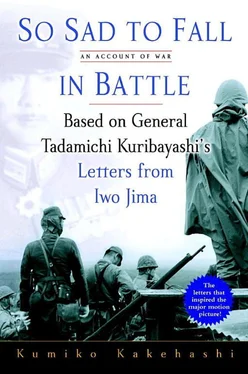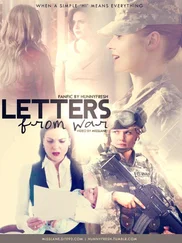—
ON AUGUST 19, 1944, THE ARMY SECTION OF THE IMPERIAL General Headquarters, which had clung so rigidly to the doctrine of defense at the water’s edge, finally changed its way of thinking and set forth a new policy of inland defense.
The Imperial General Headquarters had been confident about the defense of Saipan, which was designated a strategic point in the “national area to be defended at all costs.” Once the Americans actually started their landing operation, however, the defense garrison crumbled in no time. Saipan fell on July 7, followed by Tinian on August 3, and Guam on August 11.
The Imperial General Headquarters recognized the gravity of the situation and changed the philosophy it had followed up to that point—one of “annihilating the enemy on the water’s edge, or making a daring attack on the enemy before he was able to establish a foothold on the islands in order to annihilate him”—and switched instead to inland defense.
This new policy was called “Key Points for Defense of the Islands,” and it was transmitted not only to Iwo Jima, but also to the Palau region (Peleliu and Angaur). It began with the following two provisions.
1. The commanding officer of the defense garrison on an island must focus on holding out for a long time as we need to inflict the maximum damage on the enemy.
2. You are permitted to draw inland from the shore and choose positions that suit your needs. You may build small fortifications on the front lines of the main defensive positions in order to transform the whole island into a stronghold.
Provision One makes it clear that defense of the islands should focus on endurance and attrition.
Provision Two contains the most crucial element of the new policy. The key defensive positions can be selected as “suit[s] your needs” after “draw[ing] inland from the shore.”
This amounted to jettisoning the doctrine of defense at the water’s edge—the strategy that the military leadership had followed so persistently up to that point. With things as they were, even the Imperial General Headquarters was forced to acknowledge that it would be absurd to just keep on with the same old way of doing things.
But the policy switchover came too late.
Just like Iwo Jima, the Palau Islands were expecting the Americans to make a landing, but the building of shoreline defenses based on the traditional water’s-edge doctrine was almost complete there. The American invasion was expected any minute, so they had neither the time nor the materials to switch to inland defense.
By contrast, the decision Kuribayashi had made meant that inland defensive installations were being built on Iwo Jima two months before Imperial General Headquarters announced its new policy. The defense policy that Kuribayashi had propounded immediately after arriving on Iwo Jima was essentially identical to the “Key Points for Defense of the Islands.” It was based on a “war of attrition” and “abandoning the water’s edge for inland defenses.”
The case can be made that Kuribayashi’s decision was the result of reaching the conclusion that anyone would reach after facing reality head-on and thinking things through rationally. But overthrowing precedent required conviction, self-confidence, and powers of execution.
In fact, the navy was not alone in its opposition to Kuribayashi’s decision to abandon the strategy of defense at the water’s edge. Senior army officers on the island also expressed very hostile opinions. Kuribayashi, however, was not afraid of going out on a limb, and he gave as good as he got.
The reason Imperial General Headquarters changed its policy was because it could no longer ignore the strength of internal opinion, which was convinced that the traditional ways of thinking were no good. Plenty of other people had also reached the conclusion that the doctrine of defense at the water’s edge was no longer working.
Reaching a conclusion is one thing; creating and implementing a detailed plan rapidly regardless of any obstacles… that was something that only Kuribayashi could do. Yet at that point in time, Kuribayashi’s plan ran contrary to the policy of Imperial General Headquarters.
Kuribayashi was always “precise in observation and bold in action.” He examined things very carefully. Refusing to be governed by received opinion or precedent, he insisted on getting out there and checking things with his own eyes.
This attention to detail, which can also be seen in Kuribayashi’s letters to his family, sometimes irked his subordinates. In Tôkon Iô-Tô , Staff Officer Horie Yoshitaka recounts an episode from the early days of defense construction.
I remember that First Lieutenant Musashino had made a report to the effect that constructing defenses on sandy ground was difficult from an engineering point of view. For around the next two hours, Lieutenant General Kuribayashi was going around in his car, getting out in different places, lying down, and pretending to shoot in my direction with his cane standing in for a rifle. He ordered me to do all sorts of things—“Get down on the ground!” “On your feet!” “Get down lower!”… Now I knew what the staff officers and adjutants meant when they said, “It’s terrible. He’s such a stickler for detail.”
Staff Officer Horie also mentions that the detail-obsessed Kuribayashi never hesitated or compromised when it came to deciding on, and executing, strategy.
I don’t know where that steely force of character came from. Maybe it was something that ran in the Kuribayashi blood. He had no hesitation about saying exactly what he thought in front of other people, and once he’d had his say, he was high-handed and wouldn’t listen to other people’s opinions…. Mild-mannered people found it hard to deal with the division commander’s strength of will. In the end, the chief of staff and the brigade commander were transferred, and an authority on infantry battles came in.
From the autumn of 1944, Kuribayashi started transferring officers who had different ideas about strategy, or whom he simply judged incompetent. The brigade commander, the chief of staff, the staff officer in charge of strategy, and two battalion commanders were transferred in a dramatic shake-up. Major General Senda Sadasue, an authority on infantry battles, was sent out, having been appointed after Kuribayashi asked Imperial General Headquarters to give him “the best infantry leader you’ve got.” Senda was a first-class commander with plenty of battle experience.
Kuribayashi’s aggressive and imperious attitude exasperated some of his officers. They criticized him for “going too far,” or for “having too much confidence in his own abilities.”
The people who worked with Kuribayashi felt a mixture of shock and hostility at the boldness with which he tore up the rule book. In their responses to an oral survey conducted after the war by the War Department of the National Institute of Defense Studies, officers who survived the battle evaluated Kuribayashi thusly: “An intellect attentive to the minutest detail; a clean-cut decision-maker. He was the kind of general who would rapidly implement the decisions he had made, but it was noted that officers below the rank of chief of staff seemed to have a hard time keeping up with him.” “He made a clear distinction between ‘public’ and ‘private,’ and in his ‘public’ role, his style of leadership was merciless, relentless.”
Perhaps it was Kuribayashi’s detailed grasp of reality that made him so confident in his own judgment, and so decisive in execution. It was commonly thought that people in authority should look only at the big picture without fretting about the details, but the optimistic projections of the war leaders who expounded on the general situation while ignoring the realities were all wildly off the mark. Policies decided on without any reference to the facts of the situation on the ground just made soldiers at the front suffer and ultimately led to defeat.
Читать дальше












